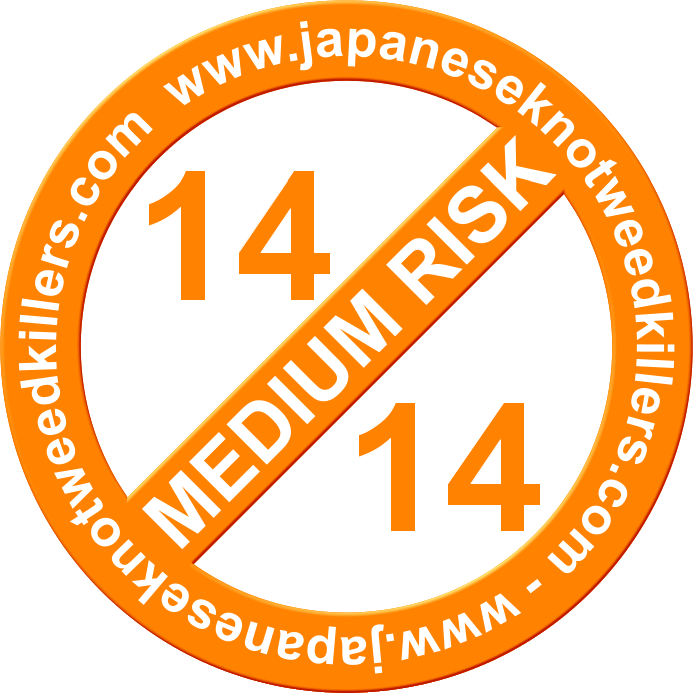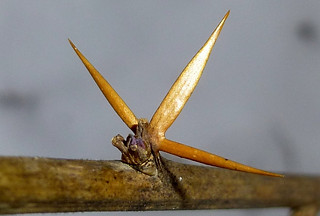

Ireland: Kerry - Dublin - Cork - Waterford - Roscommon - Galway - Belfast
UK: London - Manchester - Newcastle - Cardiff - Liverpool
Barberry
Invasive Species Information

What Is Barberry - (Berberis vulgaris)?
Habitat: Terrestrial
Distribution in Ireland: Eradicated
Status: Eradicated
Family name:
Common name/s: Common barberry, European barberry
Reproduction: Common barberry flowers are perfect and primarily insect pollinated. Nectaries occur at the base of flower petals, and bees, wasps, ants, flies, and beetles are common pollinators . Although cross pollination by insects is most common, 3 of 30 inflorescences produced fruits when protected from insects
Arching branches which come into contact with the soil can produce new plants.

Barberry fruit

Barberry bloom and leaves
Berberis vulgaris is a deciduous shrub that can reach 4 m in height.
Common barberry root and rhizome growth is often extensive. Surrounding the common barberry root crown is a "thick mass of fibrous roots". Large lateral roots occur several inches to more than a foot under ground. Lateral roots may be 2.5-5 cm in diameter near the root crown and extend 3-4.6 m from the root crown.
Common barberry root growth varies with site conditions. Shrubs in sandy, loose-textured soils produced long lateral roots.
Shrubs growing on gentle slopes with deep loam soils did not produce long tap roots.
How To Identify Barberry?

Leaf: The leaves are oval, 2-5 cm long, 1-2 cm wide, serrate and occur in clusters of 2-5. Each cluster of leaves is subtended by a short, three-branched spine.
Flower: small, yellow, less than 6 mm wide flowers develop in dangling racemes.
Fruit: Berries are red ellipsoids which are less than 10 mm in length and contain 1-3 small seeds.
Smell: Flowers have an unpleasant odor.
Barberry - Berberis vulgaris ID Guide

Barberry spines

Barberry Flowers

Barberry seeds
Why Is Barberry A Problem?
Barberry is an alien (non-native) invasive plant, meaning it out-competes crowds-out and displaces beneficial native plants that have been naturally growing in Ireland for centuries.
Berberis vulgaris is shade tolerant which allows it to easily invade woodlands. It is also an alternate host for wheat rust (Puccinia graminis) which makes the control and removal of this invasive shrub of primary importance. As an alternate host, common barberry can support the development of new genotypes able to attack rust-resistant crops. Wheat rust (Puccinia graminis) can severely reduce the yield of wheat, oat, and barley crops.
European Communities (Birds and Natural Habitats) Regulations 2011 non-native invasive plant species A-Z (Updated 2017)
There are currently 35 invasive plant species listed in the European Communities (Birds and Natural Habitats) Regulations (annex 2, Part 1)...
Click on a species from the following list to find out more regarding non-native species subject to restrictions under Regulations 49 and 50.
-
American Skunk-Cabbage - Lysichiton americanus
-
Brazilian Giant-Rhubarb - Gunnera manicata
-
Broad-Leaved Rush - Juncus planifolius
-
Cape Pondweed - Aponogeton distachyos
-
Cord-Grasses - Spartina (all species and hybrids)
-
Curly Waterweed - Lagarosiphon major
-
Dwarf Eel-Grass - Zostera japonica
-
Fanwort - Cabomba caroliniana
-
Floating Pennywort - Hydrocotyle ranunculoides
-
Fringed Water-Lily - Nymphoides peltata
-
Giant Hogweed - Heracleum mantegazzianum
-
Giant Knotweed - Fallopia sachalinensis
-
Giant-Rhubarb - Gunnera tinctoria
-
Giant Salvinia - Salvinia molesta
-
Himalayan Balsam - Impatiens glandulifera
-
Himalayan Knotweed - Persicaria wallichii
-
Hottentot-Fig - Carpobrotus edulis
-
Japanese Knotweed - Fallopia japonica
-
Large-Flowered Waterweed - Egeria densa
-
Mile-a-Minute Weed - Persicaria perfoliata
-
New Zealand Pigmyweed - Crassula helmsii
-
Parrots Feather - Myriophyllum aquaticum
-
Red Alga - Grateloupia doryphora
-
Rhododendron - Rhododendron ponticum
-
Salmonberry - Rubus spectabilis
-
Sea-Buckthorn - Hippophae rhamnoides
-
Spanish Bluebell - Hyacinthoides hispanica
-
Three-Cornered Leek - Allium triquetrum
-
Wakame - Undaria pinnatifida
-
Water Chestnut - Trapa natans
-
Water Fern - Azolla filiculoides
-
Water Lettuce - Pistia stratiotes
-
Water-Primrose - Ludwigia (all species)
-
Waterweeds - Elodea (all species)
-
Wireweed - Sargassum muticum
Additional Non-Native Plant Species identified as Medium Risk on Ireland's Biodiversity List...
Common name
Barberry
Brazilian waterweed
Butterfly-bush
Canadian-fleabane
Clover broomrape
False acacia
Garden lupin
Giant rhubarb
Hairy rocket
Himalayan honeysuckle
Himalayan knotweed
Holm oak
Pampas grass
Pitcherplant
Red oak
Rock cotoneaster
Salmonberry
Sycamore
Three-cornered garlic
Traveler's-joy
Species name
Lysichiton americanus
Antithamnionella ternifolia
Ribes nigrum
Egeria densa
Buddleja davidii
Conyza canadensis
Codium fragile ssp. tomentosoides
Pseudotsuga menziesii
Solidago gigantea
Gunnera manicata
Persicaria wallichii
Lonicera japonica
Euphorbia esula
Acaena ovalifolia
Matteuccia struthiopteris
Sarracenia purpurea
Bunias orientalis
Environment
Terrestrial
Terrestrial
Terrestrial
Marine
Terrestrial
Terrestrial
Freshwater
Terrestrial
Terrestrial
Terrestrial
Terrestrial
Marine
Terrestrial
Terrestrial
Terrestrial
Terrestrial
Terrestrial
Terrestrial
Terrestrial
Terrestrial
Terrestrial
Terrestrial
Terrestrial
Terrestrial
Terrestrial
Terrestrial
Freshwater
Terrestrial
Terrestrial
Terrestrial
Terrestrial
Terrestrial
Terrestrial
Marine
Terrestrial
Terrestrial
Terrestrial
Terrestrial
Terrestrial
Terrestrial
Terrestrial
Terrestrial
Terrestrial
Terrestrial
Terrestrial
Terrestrial
Freshwater
Terrestrial
Risk score
14
15
17
15
14
14
17
17
14
17
16
16
15
14
17
17
17
16
17
14
16
14
14
15
14
16
14
16
14
14
14
14
14
14
14
17
14
14
14
15
15
17
17
14
16
15
14
15

